If you're new here, you may want to subscribe to my RSS feed. Thanks for visiting!
by Chuck Hudson
The last time we visited I wrote an article for Daisy about my different first aid kits that I created built on my experience as an Army medic. And she let me know an important item I forgot.
How to use some of the less common items.
There are a lot of items in the kits. Not all may be things everyone is used to. So Daisy asked me to do a series of articles that cover:
- When do you need to use this item?
- How do you use this item?
- What are some warnings about using this item?
In the basic kit, you see basic items. One that stands out is Super Glue. Let’s start with that one.
Note from Daisy: The information provided here is for use when there is no medical care available. You should always seek appropriate medical care as your first option.
When do you use that super glue from your first aid kit?
Super glue is one of the greatest inventions. It will bond almost anything. Army Medics and Navy Corpsman were the first to ever use it in the field, during the Vietnam War. They glued more patients back together than they sewed. Placing a standard interrupted suture for every stitch you make two new wounds – two new avenues of infection. Super glues eliminated that route of infection
You can use super glue when you have a cut. Deep or shallow, it doesn’t matter – you need to protect it from infection. Sealing the wound is your best bet. Why should you worry about a tiny cut? In the SHTF world, more people will die of infection than major trauma. Why? Because no matter how much people like me preach about diet and washing hands, its human nature to find 5000 more important things to do when you’re trying to survive.
How to use super glue on a cut
Using super glue is pretty easy. Just follow a few simple directions. Included are some screen captures from a first aid video I made on how I used medical glue to close a wound in a piece of pork. Meet our victim:
First, make sure the wound is not bleeding and is dry and CLEAN. Notice how clean is in bold type. If you seal a wound and it is not clean you are making an incubator. Warm, wet, dark and chock full of goodness for bacteria to eat. Blood poisoning or as we say in the biz, Septicemia, is fatal. Even with 21st-century medication and care. You do not want someone to experience that type of death.
Once the wound is clean and dry, you’ll start to apply the super glue. Whoa! Hold up there cowboy! Don’t just dump it in there! A very close and dear friend of mine closed a deep wound on his arm once it healed there was almost no scar. He had cut it on a piece of metal roofing. Deep and long. He cleaned it perfectly got it dry. And closed it. But he closed both the muscle and the skin and discovered a new meaning to the word. ITCH. When you apply super glue below the skin level, the body thinks it’s being invaded and attacks it. My friend had a knot under his skin and a deep itch for months.
Then you’ll close the wound while applying the super glue. To close, start at either edge. Pinch the wound closed, and apply a drop or 2 along the first 1/4 inch.
Hold until its completely dry. Move up and repeat this process until the wound is completely closed.
Then dress with a band-aid. What? A band-aid? Yep, it will give your repair an extra layer of protection. Here’s what the wound looks like when it’s closed and you’re ready for duty.
What super glue should you use?
I recommend you get the Loctite ultra gel super glue. It’s fairly flexible and lasts much longer than the standard super glues.
There is also a less expensive medical grade glue called 3M Vet Bond Tissue Adhesive. It carries similar properties of Dermabond Skin Adhesive by Johnson and Johnson but each bottle can be used multiple times, while Dermabond is single use. This makes Vet Bond much less expensive!
DO NOT USE the cheap 4-tubes-for-a-dollar super glue or those thin liquid glues. They will run deep into the wound, then turn white and flake off in minutes to maybe an hour leaving the wound unprotected.
What are some of the hazards of using super glue?
Everything in medicine has a risk/benefit, even something like super glue. So some of the risks of using it are:
- Infection.
- Allergic reaction
- Tissue necrosis ( Tissues the glue binds to dies)
When you should NOT use super glue
Remember this: super glue does not work well on joints. It is not very flexible. (Except for the Locktite brand mentioned above, and still, this isn’t ideal for a joint like an elbow or knee.)
Never use super glue on animal bites (including human bites.) The risk of infection is very high with any bites, and that’s the main reason why most are not closed.
Now you know how to use that super glue in your first aid kit.
Do you have questions or anything to add? Use the comments section below.
Coming up next? How to use pressure bandages like Israeli Bandages and H Bandages.

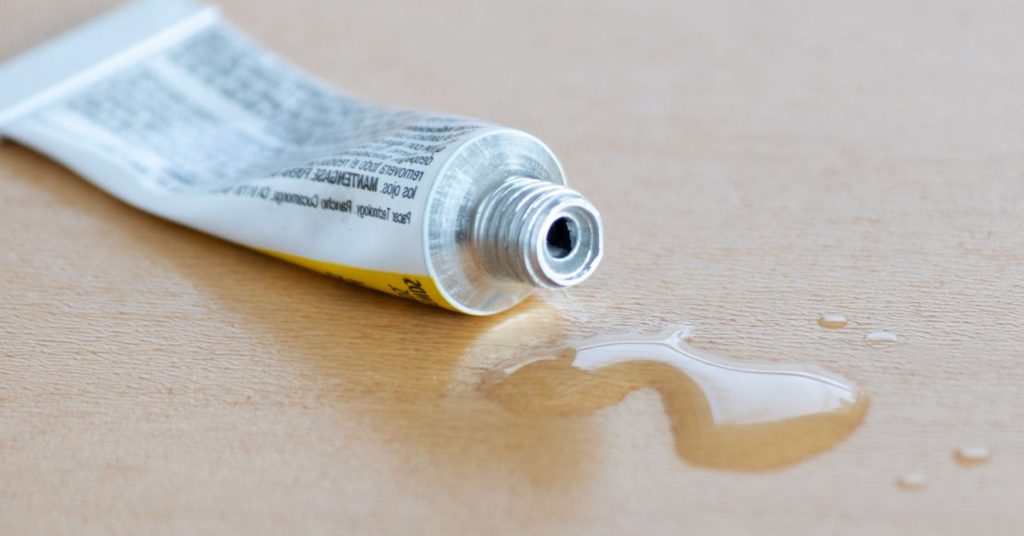
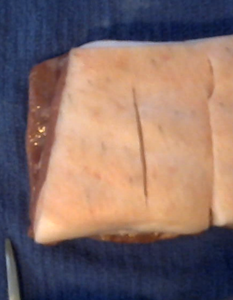
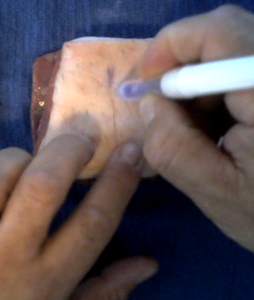
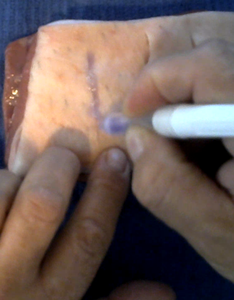
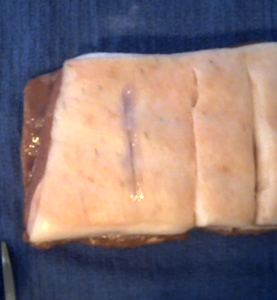














Good to know. Thanks for the brand names, makes it easier to stock up with confidence.
To add to what Chuck said – we use Krazy Glue on a regular basis to close wounds. Here is a story of one of my accidents.
I was carrying the bedsheets down the stairs and tripped. I fell about four steps and landed on my glasses. One side of the metal glass frame had cut my cheek. It was really bleeding.
By the time I got to the bathroom to look it had swollen! After all, 150 pounds landing on a cheek was traumatic. I realized that first I had to reduce the swelling and stop the bleeding. So, I got my ever present frozen bottle of water and laid down. It took a while for the bleeding to stop and the swelling to reduce. When I could clearly define the straight edges of the cut, I cleaned it. Then, as you describe, started at one end and pulled the sides together, gradually working toward the end.
This was about 6 years ago. I cannot see the location of the cut. There is NO scar.
Learned that I would not have had a good quality glue or the correct way to use it. Thank you for sharing your knowledge with me an others.
I worked for a surgeon for a number of years. Most wounds he closed with a surgical grade of super glue. Worked like a charm and I don’t recall ever having a patient be allergic to it. It peeled off on its own in about 10 days. I’ve always wondered if regular super glue would work for small wounds. Thanks!
From what I’ve read this stuff goes bad somewhere between a month and a year making it useless for long-term storage. Is there a more storable form of super glue?
Cyanoacrylate glues cure because of moisture. Even the relative humidity in the air is enough to cause the glue to cure prematurely. This is why you open a tube, use it, and then a month later find the tube worthless. I keep my Super Glue in a mason jar that’s lined with silica dessicant packs. I use CA glues in instrument repairs. Storing it this way, I’ve a bottle of 3M that is close to four years old and still usable. Numerous small tubes are in there too, and still good to go.
Cyanocrylate Glues come in different viscosities. From the water like consistancy to two different gel consistancies. Thin Super Glue isn’t recommended for wound closure, because like water, it will be drawn in to the wound by capillary action. The Gels are what you should keep in your First Aid/Trauma kit. Even unopened, place the tube or bottle in an empty prescription bottle that seals along with a small dessicant packet. It will last a lot longer.
Thanks Chuck for your articles. Look forward to future articles.
Note, the following below is not medical advice in any form. I am not a doctor.
While my comment is not about superglue it is related to woundcare dressing.
After ungraciously cutting my knuckle with a factory sharp knife, I used a 3M Tegaderm dressing that was available. I was impressed howed the cut healed nicely and in the process learned a new term ‘autolytic debridment’ where the dead wound skin goes away.
I suggest reading up on that product and the various ways the skin is thorn, abrased and cut, each requiring it’s own type of treatment and dressing.
Hope you had a good Veterans Day Chuck.
The medics I have met are great people. Its easy to understand why they are a valuble (if not the most guarded) person in a squad.
Especially, under the conditions they work.
Ps.
(Yea, always an afterthought.)
If you want to be a valuable and protected member of a SHTF community learn EMT, or any medical training you can. Remember, its gonna be different with bullets flying, graphic scenarios and people screaming.
Thank you!
Baking Soda works as an accelerant, if the glue isn’t setting up, sprinkle a little on it. Caution it may heat up a bit. Also useful to build up a protective layer. I do it on finger cracks by the nails.
At my pottery studio, my instructor suggested this method of closing a cut prior to working with clay. I allowed him to seal my cutbwith the Crazy Gluebtube at the studio. Then I started wondering how many others had used the same tube?! He dabbed the tip of the container onto my finger as he presumably has done to others before. Can I get/contract anything from this shared bottle of crazy glue on my cut?
Add baking soda to the kit for use with the super glue. Sprinkle it on top of the glue and it hardens almost instantly, making a very strong bond.
GREAT article! taught me something I didnt know! need more first aid “easies” like this, adding new things to my first aid kit…..more uses on pets too….
thanks!